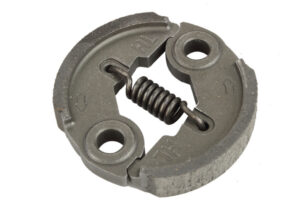Clutch Springs

Clutch springs are a vital component in various mechanical systems, ensuring the smooth engagement and disengagement of clutches. From automotive to industrial applications, the proper functioning of clutch springs plays a critical role in maintaining performance, efficiency, and safety.
Coil Clutch Springs: Unleashing Efficiency and Performance
Coil clutch springs, classified as compression springs, find application in various types of clutches. These versatile springs serve multiple purposes, from controlling vibrations and sound in clutch dampers to enabling smooth gear engagement and release in vehicular clutches. In this article, we will explore the characteristics, adjustment options, and benefits of coil clutch springs.
1. Functionality and Applications:
Coil clutch springs are designed to absorb radial vibrations generated by a drifting engine. They compress until the main damper springs take over, ensuring optimal damping performance. Additionally, these springs are strategically placed between diaphragm springs, facilitating smooth clutch engagement and release during gear changes in vehicles.
2. Adjusting Force:
To fine-tune the force of a coil clutch spring, several options are available. For increased force, one can opt for larger wire diameters, reduced outer diameters, removal of coils, or extension of the free length, which allows for greater force through increased travel. Conversely, if lower force is desired, smaller wire diameters, larger outer diameters, additional coils, or lengthening of the free length can be considered. However, caution should be exercised when shortening the free length, as stock these springs are usually pre-loaded at an optimal distance traveled.
3. Tension Clutch Springs:
They are categorized as extension springs and feature hooks on their ends. These springs are commonly used in centrifugal clutches, where the engine speed dictates the position of the clutch. With the help of centrifugal force, tension clutch springs automatically engage the clutch at higher RPMs and disengage it at lower RPMs. By releasing the held-in legs, the centrifugal force causes the clutch to contact the bell and drive the output.
4. Adjusting Force in Tension Clutch Springs:
Similarly, adjusting the force of these springs can be achieved through various methods. To increase force, one can consider larger wire diameters, reduced outer diameters, removal of coils (shortening the body length), or decreased hook lengths for increased force through more travel. On the other hand, reducing force can be accomplished by using smaller wire diameters, larger outer diameters, additional coils (increased body length), or longer hook lengths. However, elongating the hook length is not recommended, as stock tension clutch springs are already pre-loaded at an optimal distance traveled.
5. Utilizing Advanced Design Software:
When designing tension or coil clutch springs, it is highly recommended to employ advanced spring design software like our professional calculator, spring Creator. This cutting-edge tool provides accurate spring analysis and generates a live blueprint of the design. Additionally, the calculator suggests similar stock springs, offers quotes for custom manufacturing, and enables the sharing of designs via email.
They are essential components in a wide range of clutches, ensuring efficient power transmission and smooth gear changes. By understanding their functionality, adjusting force requirements, and utilizing advanced design tools, engineers and manufacturers can optimize performance and reliability. Whether it’s controlling vibrations or facilitating automatic engagement in centrifugal clutches, these springs are integral to enhancing efficiency and delivering superior results.
Expertise and Manufacturing Capabilities:
As a professional spring manufacturer with expertise is crucial to ensure the highest level of precision and reliability. Our factory employ skilled engineers and technicians who possess an in-depth understanding of material properties, spring design principles, and advanced manufacturing techniques. We leverage state-of-the-art CNC wire forming machines, computerized testing equipment, and stringent quality control processes to deliver superior clutch springs.
As a leading manufacturer in China, we bring years of expertise and experience in producing compression springs. Our team of skilled engineers and technicians possesses in-depth knowledge of clutch systems and understands the critical role springs play in their performance. We are committed to delivering such springs of superior quality that meet or exceed customer expectations.
| Material | Stainless steel, carbon steel, spring steel, alloy spring steel, refractory steel, brass, metal, bronze, etc. |
| Wire diameter | 0.2- 12 mm |
| Finish | Zinc, nickel, chrome, silver, gold, imitation gold plating or as request |
| Styles of ends | As customers’s requirements |
| Load | Our computer program can assist you based on the load design |
| OEM & ODM | Acceptable |
Commitment to Quality:
We prioritizes quality at every stage of production. Our company adhere to international standards and utilize premium-grade materials such as hardened and tempered steel wire, ensuring durability and resistance to fatigue. Rigorous testing methods, including load testing, stress analysis, and dimensional checks, guarantee the integrity and consistency of every spring produced.
Customization Options:
ChinaCustomSpring understand the importance of customization to meet specific client requirements. We offer a wide range of options, including varying wire diameters, coil configurations, and load characteristics. With the ability to tailor clutch springs based on unique application demands, manufacturers ensure optimal performance, enhanced durability, and improved overall system efficiency.
Conclusion
Clutch springs, with their critical role in power transmission and seamless gear engagement, demand the expertise and precision offered by professional manufacturers. By partnering with Chinacustomspring, businesses can benefit from superior quality, customization options, and global competitiveness. It is essential to prioritize reliability, durability, and adherence to international standards.






